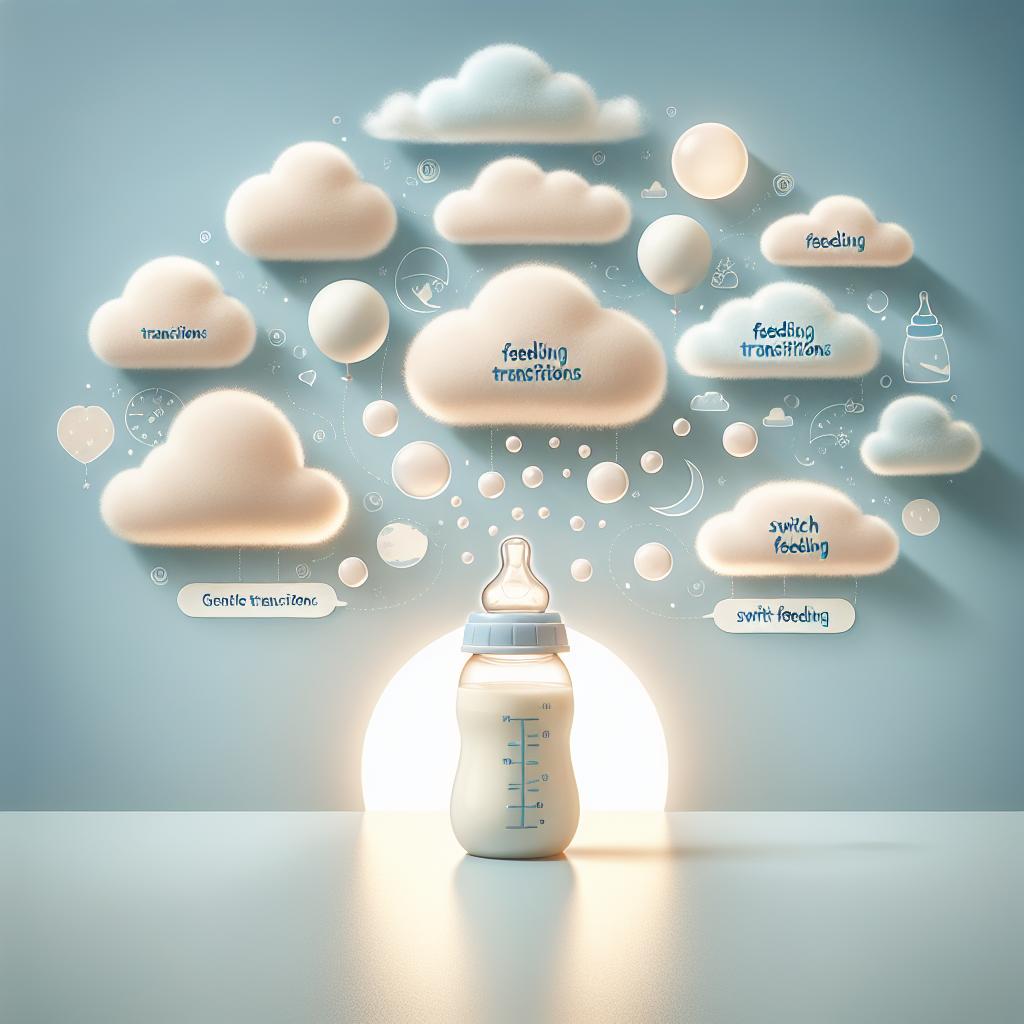Preparing For The Transition
Transitioning from breast to bottle can often be a challenging task, but with the right approach and products, it can be a smooth and stress-free experience for both the parent and the baby. It requires patience, the right timing, and above all, understanding your baby’s needs.
Tailoring the Transition to Your Baby’s Unique Needs
One of the key aspects of making the transition from breast to bottle is to tailor the transition process to your baby’s individual needs. Every baby is different, and what works well for one may not necessarily work for another. Some babies might take to the bottle with ease, while others could show resistance.
Steps Towards a Smooth Transition
Here are some steps to help guide you through the transition:
- Pick the right time: Start the transition at a time when your baby is not too hungry or too full. This may help them to be more accepting of the bottle.
- Introduce the bottle gradually: Begin by replacing one breastfeeding session with a bottle feeding. As the baby gets used to the bottle, you can gradually increase the number of bottle feedings.
- Choose the right bottle: Consider bottles that are designed to mimic breastfeeding, such as the NUK Smooth Flow Anti-Colic bottle. This can make the transition easier for your baby.
- Get help: If your baby refuses to take the bottle from you initially, you may want to enlist the help of another caregiver. Sometimes babies will more readily accept a bottle from someone else.
Selecting the Best Bottle for Your Baby
The bottle you choose can play a crucial role in facilitating the transition from breast to bottle. When selecting a bottle, you should consider its design, material, nipple shape, flow speed, and more. For instance, bottles with wide, breast-like nipple can make switching back and forth easier. One such bottle recommended by experts is the NUK Smooth Flow Anti-Colic Bottle, which is designed to mimic the flow, shape, and feel of a mother’s breast. Learn more about this bottle here.
How Scientific Testing Ensures the Best Baby Bottles
It’s also crucial to understand that quality baby bottles undergo rigorous scientific testing to ensure they provide the best feeding experience to babies while being safe and efficient. To understand the science behind the selection of best baby bottles, click here.
Baby Feeding Tips for a Successful Transition
Baby feeding tips can significantly ease the transition process. From finding the right feeding position to creating a comforting environment, these aspects can make a difference in your baby’s feeding experience. To discover more about these baby feeding tips and learn how certain bottles can make feeding a joyful experience, click here.
Transitioning from breast to bottle doesn’t have to be a daunting task. By understanding your baby’s needs, selecting the right bottle, and creating a comforting feeding environment, you can ensure a smooth transition for your baby and yourself.
Introducing Your Baby to Formula
In many instances, transitioning to bottle feeding often involves introducing your baby to formula. Adjusting from breast milk to formula can be an entirely new experience for both the mother and the newborn. Following these informative tips for a smooth formula transition will prove effective in easing this adjustment period.
Mixing Breast Milk with Formula
One technique that could be employed in introducing formula is gradually mixing it with breast milk. This mixture can be introduced through your choice of bottle. The taste evolution can see your baby gradually acclimate to this new diet, all while maintaining those beneficial nutritional aspects they are accustomed to.
Temperature, Taste, and Texture – Imitating Breast Milk
When it comes to alternating between breast and bottle feeds, there are three major criteria that need to be mimicked – temperature, taste, and texture. Opting for formula options that are as close as possible to the properties of breast milk would ensure a more straightforward shift for your baby.
Transitioning Techniques
Remember that the transition process may not always be seamless, that’s why your approaches to bottle-feeding should be multifaceted. A well-rated transitioning product, like nanobebe breastmilk feeding bottle, could make the process considerably smoother. Consideration should also be given to environment, caregiver preferences, and feeding techniques which all play a significant role in the shift.
Useful Additional Resources
Stay informed and consult expert guidance throughout the transition process. Participate in informative webinars to keep up to speed with new information, trends, and expert discussions about bottle-feeding. Additionally, check out this article on introducing your breastfed baby to the bottle or cup for more insight.
A Patient, Deliberate Process
Just like many other aspects of parenting, a patient and thoughtful approach can make the transition from breast to bottle a less stressful and more rewarding experience. Remember that every baby is unique, and it is normal if your child takes a little longer to adapt to the change.
Final Thoughts
The transition from breast to bottle can be nuanced and requires attention to detail. With the information and resources mentioned here, it is possible to choose the best techniques, products, and practices. This will, in turn, create a smooth and stress-free transition for your baby and yourself.
Remember to stay patient and react positively to your baby’s reactions during this transition. This period could be a bonding experience, full of learning and understanding for both the parent and the baby.





